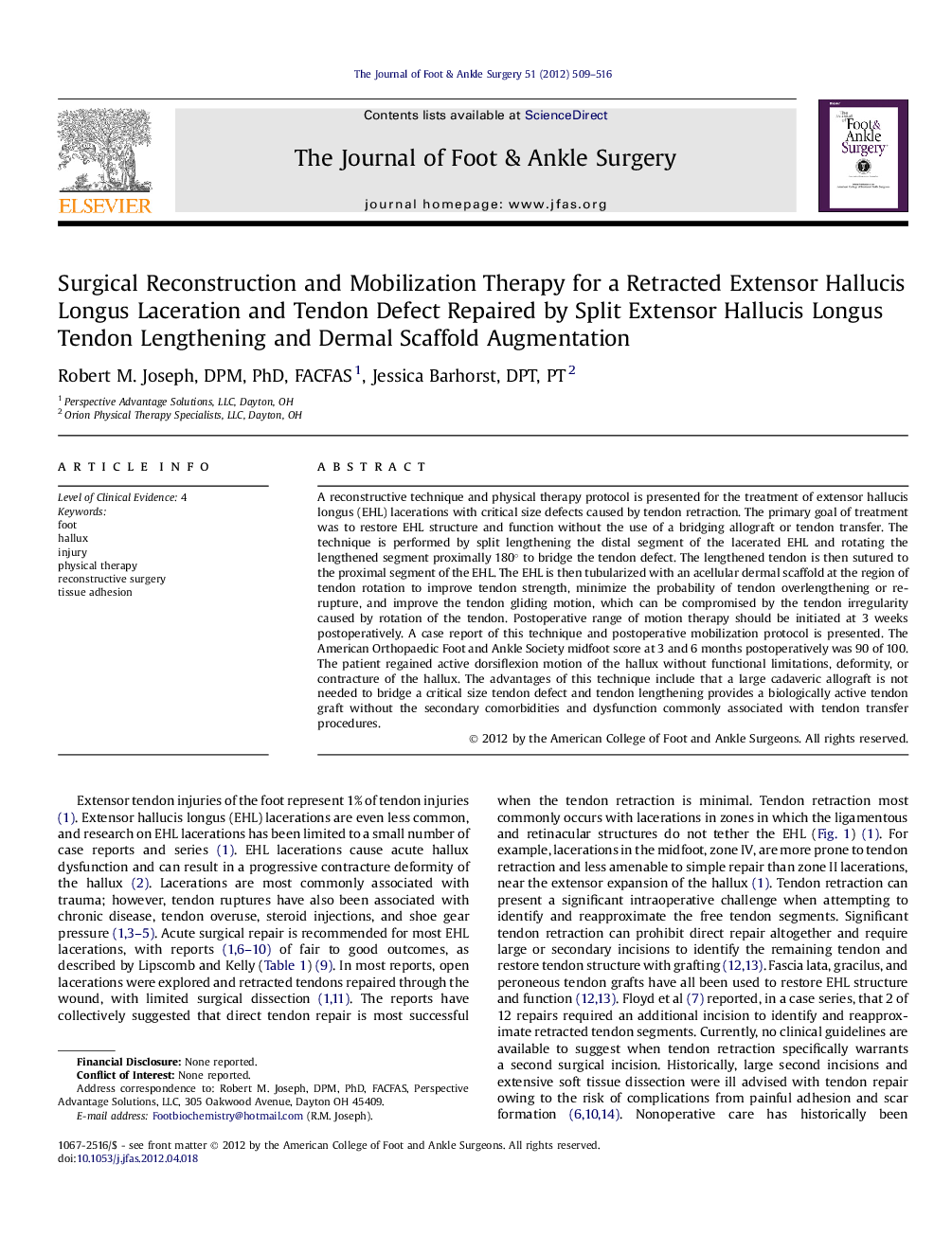| Article ID | Journal | Published Year | Pages | File Type |
|---|---|---|---|---|
| 2719888 | The Journal of Foot and Ankle Surgery | 2012 | 8 Pages |
A reconstructive technique and physical therapy protocol is presented for the treatment of extensor hallucis longus (EHL) lacerations with critical size defects caused by tendon retraction. The primary goal of treatment was to restore EHL structure and function without the use of a bridging allograft or tendon transfer. The technique is performed by split lengthening the distal segment of the lacerated EHL and rotating the lengthened segment proximally 180° to bridge the tendon defect. The lengthened tendon is then sutured to the proximal segment of the EHL. The EHL is then tubularized with an acellular dermal scaffold at the region of tendon rotation to improve tendon strength, minimize the probability of tendon overlengthening or re-rupture, and improve the tendon gliding motion, which can be compromised by the tendon irregularity caused by rotation of the tendon. Postoperative range of motion therapy should be initiated at 3 weeks postoperatively. A case report of this technique and postoperative mobilization protocol is presented. The American Orthopaedic Foot and Ankle Society midfoot score at 3 and 6 months postoperatively was 90 of 100. The patient regained active dorsiflexion motion of the hallux without functional limitations, deformity, or contracture of the hallux. The advantages of this technique include that a large cadaveric allograft is not needed to bridge a critical size tendon defect and tendon lengthening provides a biologically active tendon graft without the secondary comorbidities and dysfunction commonly associated with tendon transfer procedures.
